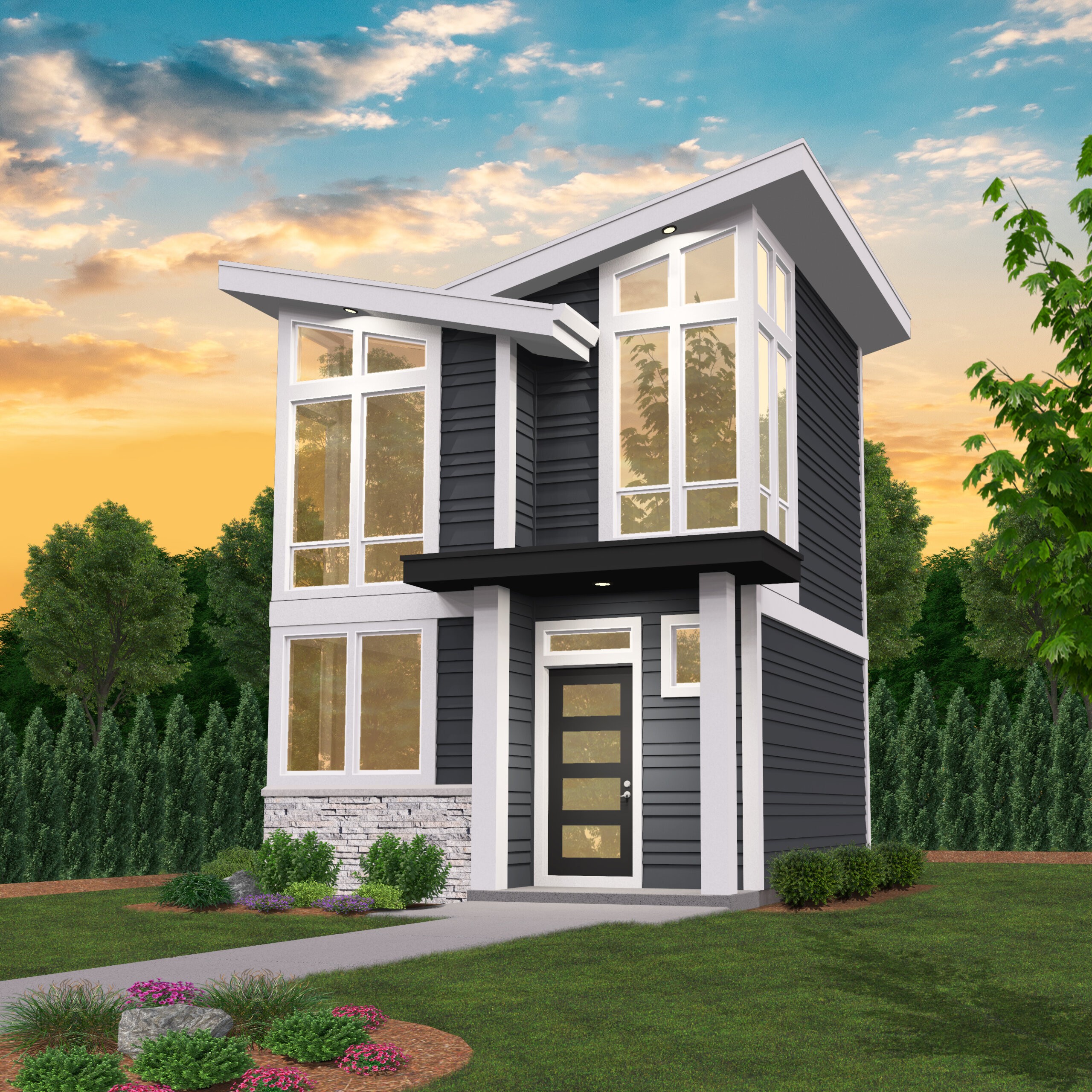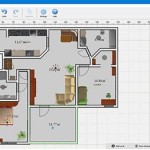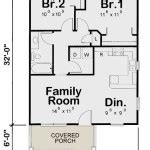Small house floor plans serve as blueprints for designing and constructing homes with limited square footage. These plans typically encompass floor spaces ranging from 200 to 1,000 square feet and are characterized by efficient and compact layouts.
Their primary purpose is to maximize space utilization and create functional living environments within a constrained footprint. Small house floor plans often incorporate open-concept designs, multi-purpose rooms, and built-in storage solutions to optimize space while maintaining comfort and functionality. These plans are prevalent in urban areas where land is scarce and in situations where individuals or families prioritize affordability and sustainability.
To further delve into the intricacies of small house floor plans, this article will explore common design elements, space-saving strategies, and key considerations for creating livable and efficient small homes.
When designing small house floor plans, there are several key considerations that should be taken into account to ensure functionality and livability within a limited footprint.
- Open-concept layouts
- Multi-purpose rooms
- Efficient storage solutions
- Vertical space utilization
- Natural light optimization
- Smart space planning
- Energy efficiency
- Cost-effectiveness
By carefully considering these factors, it is possible to create small houses that are both comfortable and practical, without compromising on style or functionality.
Open-concept layouts
Open-concept layouts are a defining characteristic of many small house floor plans. They involve the elimination of traditional walls between the living room, dining room, and kitchen, creating a single, unified space. This approach offers several advantages:
- Increased spaciousness: Removing walls makes the area feel larger and more inviting, reducing the sense of crampedness that can be associated with small homes.
- Improved natural light: With fewer walls obstructing the flow of light, open-concept layouts allow for better distribution of natural light throughout the space, making it brighter and more airy.
- Enhanced flow: Open-concept layouts promote easy movement and interaction between different areas of the home, fostering a sense of togetherness and connection.
- Multi-functionality: The open space can be used for multiple purposes, allowing for flexible and adaptable living arrangements. For example, the dining area can double as a home office or play area.
However, open-concept layouts also require careful planning to ensure privacy and noise control. Strategic placement of furniture, rugs, and other elements can help define different areas within the open space while maintaining a sense of cohesion.
In small house floor plans, open-concept layouts are particularly beneficial as they help maximize space utilization and create a more spacious and inviting living environment.
Multi-purpose rooms
Multi-purpose rooms are a clever and space-saving solution for small house floor plans. These rooms can serve multiple functions, adapting to different needs and activities throughout the day. Here are some key advantages of incorporating multi-purpose rooms in small homes:
- Flexible and adaptable: Multi-purpose rooms can be easily reconfigured to accommodate changing needs. For example, a guest room can double as a home office during the day and a sleeping space at night.
- Space optimization: By combining multiple functions into one room, multi-purpose rooms maximize space utilization and eliminate the need for dedicated spaces for each activity.
- Cost-effectiveness: Creating multi-purpose rooms can be more cost-effective than building separate rooms for each function, as it reduces construction and furnishing expenses.
- Enhanced livability: Multi-purpose rooms promote a more efficient and organized living environment, reducing clutter and creating a sense of spaciousness.
In small house floor plans, multi-purpose rooms are particularly valuable as they allow homeowners to make the most of their limited space without compromising on functionality and comfort.
Efficient storage solutions
Incorporating efficient storage solutions is crucial for maximizing space utilization and maintaining a clutter-free environment in small house floor plans. One effective strategy is to utilize vertical space by installing floor-to-ceiling cabinets, shelves, and drawers. This approach takes advantage of unused vertical areas, providing ample storage capacity without taking up valuable floor space.Another space-saving solution is to incorporate built-in storage into the design of furniture and fixtures. For example, ottomans with built-in storage compartments can serve as both seating and storage, while beds with drawers or trundle beds can provide additional storage for linens and other items. Additionally, utilizing the space under stairs or in awkward corners with customized storage units can maximize every available square footage.Multi-purpose furniture is another clever way to optimize storage in small homes. Items such as coffee tables with built-in drawers or ottomans that double as storage chests provide both functionality and storage space. Wall-mounted shelves and floating desks not only save floor space but also create the illusion of a larger room.Lastly, it is essential to adopt a minimalist approach to declutter and minimize the accumulation of unnecessary items. Regular purging and organization can help keep the space tidy and clutter-free, making it feel more spacious and comfortable. By incorporating these efficient storage solutions, small house floor plans can achieve both functionality and a sense of spaciousness.
Efficient storage solutions are not only about maximizing space utilization but also about creating a more organized and livable environment. By implementing these strategies, homeowners can enjoy a small home that feels both comfortable and clutter-free.
Vertical space utilization
Vertical space utilization is a crucial strategy for maximizing space in small house floor plans. By taking advantage of the vertical dimension, homeowners can create the illusion of a larger space and increase storage capacity without sacrificing comfort or functionality. One effective way to utilize vertical space is to install floor-to-ceiling cabinets and shelves. These tall storage units provide ample space for books, dcor, and other items, while minimizing the footprint on the floor.Another way to make use of vertical space is to incorporate mezzanines or lofts. These elevated platforms can be used as additional sleeping areas, home offices, or storage spaces. They are particularly useful in homes with high ceilings, as they allow homeowners to create an extra level without significantly reducing the perceived height of the room.Vertical space can also be utilized by installing floating shelves and wall-mounted furniture. Floating shelves create the illusion of more space by giving the impression that items are suspended in the air. Wall-mounted furniture, such as desks, shelves, and cabinets, free up valuable floor space and make the room feel less cluttered.Lastly, homeowners can make use of vertical space by incorporating built-in storage into the design of stairs and walls. For example, drawers can be built into the risers of stairs, and shelves can be recessed into walls to provide additional storage without taking up extra space. By maximizing vertical space, small house floor plans can achieve both functionality and a sense of spaciousness.
Vertical space utilization is a smart and effective way to create a more livable and functional small home. By incorporating these strategies, homeowners can make the most of their limited square footage and enjoy a comfortable and inviting living environment.
Natural light optimization
Natural light optimization is a key consideration in small house floor plans, as it can make the space feel larger, brighter, and more inviting. One effective way to optimize natural light is to incorporate large windows and skylights. Large windows allow ample sunlight to enter the home, reducing the need for artificial lighting and creating a more cheerful and welcoming atmosphere. Skylights are another excellent way to bring natural light into the home, especially in areas where windows are limited. They can be installed in strategic locations to provide additional lighting and ventilation.Another way to optimize natural light is to use reflective surfaces. Light-colored walls, floors, and ceilings reflect more light, making the space feel brighter and more spacious. Mirrors can also be strategically placed to reflect light and create the illusion of a larger room. Additionally, using sheer curtains or blinds instead of heavy drapes allows natural light to filter into the home while still providing privacy.Proper window placement is crucial for effective natural light optimization. When designing small house floor plans, consider the orientation of the house in relation to the sun’s path. South-facing windows allow for maximum sunlight throughout the day, while east-facing windows provide ample morning light. North-facing windows offer less direct sunlight but can provide diffused light, which can be beneficial for certain areas of the home, such as bedrooms and bathrooms.Lastly, it is important to minimize obstructions to natural light. Avoid placing tall furniture or bulky objects in front of windows, as this can block sunlight from entering the home. Keep windowsills clear of clutter and consider using sheer curtains or blinds that allow light to pass through while still providing privacy. By carefully considering natural light optimization in small house floor plans, homeowners can create bright, airy, and inviting living spaces.
Natural light optimization is not only about making a small home feel larger and brighter but also about creating a healthier and more sustainable living environment. Natural light has been shown to improve mood, boost energy levels, and reduce stress. It can also help regulate the body’s natural sleep-wake cycle and improve overall well-being.
Smart space planning
Smart space planning is crucial for creating functional and livable small house floor plans. It involves carefully considering the use of space and incorporating clever design strategies to maximize functionality and comfort within a limited footprint.
- Multi-functional furniture:
Incorporating multi-functional furniture is a smart way to optimize space and make the most of every square foot. Ottomans with built-in storage, coffee tables with drawers, and beds with trundle beds or built-in storage compartments provide both functionality and storage space without taking up excessive floor area.
- Vertical storage solutions:
Utilizing vertical space is essential in small house floor plans. Floor-to-ceiling cabinets, shelves, and drawers can be installed to provide ample storage capacity without sacrificing valuable floor space. Additionally, wall-mounted furniture, such as floating desks, shelves, and cabinets, can help free up floor space and make the room feel less cluttered.
- Open floor plans:
Open floor plans, which eliminate traditional walls between living spaces, can create a more spacious and inviting feeling in small homes. By removing walls and combining areas such as the living room, dining room, and kitchen, homeowners can make the most of the available space and create a more fluid and functional living environment.
- Built-in storage:
Incorporating built-in storage into the design of small house floor plans can maximize space utilization and maintain a clutter-free environment. Custom built-ins, such as window seats with storage compartments, under-stair drawers, and recessed shelves, can provide additional storage space without taking up valuable floor area.
By implementing these smart space planning techniques, homeowners can create small house floor plans that are both functional and comfortable, ensuring that every square foot is used wisely and efficiently.
Energy efficiency
Energy efficiency is a crucial consideration in small house floor plans, as it can significantly reduce energy consumption and utility costs while promoting a more sustainable lifestyle. One key aspect of energy efficiency is proper insulation. Installing high-quality insulation in walls, ceilings, and floors can minimize heat loss during winter and heat gain during summer, reducing the demand for heating and cooling systems.Another important energy-efficient feature is the use of energy-efficient appliances and lighting. ENERGY STAR-rated appliances, such as refrigerators, dishwashers, and washing machines, consume less energy compared to standard models. Similarly, LED lighting is more energy-efficient than traditional incandescent or fluorescent bulbs, providing significant energy savings over time.Incorporating passive solar design principles can further enhance energy efficiency in small house floor plans. This involves orienting the house to take advantage of natural sunlight for heating during winter and minimizing heat gain during summer. Large south-facing windows allow sunlight to enter the home, reducing the need for artificial lighting and heating. Overhangs and awnings can be used to shade windows from direct sunlight during summer, keeping the home cooler.Finally, consider installing renewable energy sources, such as solar panels or geothermal heat pumps, to further reduce reliance on traditional energy sources. Solar panels can generate electricity from sunlight, offsetting the need for grid-supplied electricity, while geothermal heat pumps use the earth’s natural heat to provide heating and cooling, minimizing the use of fossil fuels. By incorporating these energy-efficient strategies into small house floor plans, homeowners can create sustainable and cost-effective living spaces that promote environmental consciousness and reduce their carbon footprint.
Energy efficiency in small house floor plans not only reduces energy consumption and utility costs but also contributes to a healthier and more comfortable living environment. By implementing these energy-saving measures, homeowners can create sustainable and eco-friendly homes that align with modern building practices and environmental concerns.
Cost-effectiveness
Cost-effectiveness is a primary consideration in small house floor plans, as it directly impacts the overall affordability and feasibility of the project. Implementing cost-effective strategies can help homeowners achieve their dream home without breaking the bank.
- Smaller footprint:
Small house floor plans inherently require less building materials and labor compared to larger homes, resulting in lower construction costs. A smaller footprint reduces the need for excavation, foundation work, and roofing, which can significantly impact the overall budget.
- Efficient design:
Well-designed small house floor plans prioritize space utilization and minimize wasted space. By incorporating smart design strategies, such as open floor plans, multi-purpose rooms, and vertical storage solutions, homeowners can reduce the need for additional square footage, leading to cost savings.
- Energy efficiency:
Incorporating energy-efficient features into small house floor plans can reduce long-term utility costs. Energy-efficient appliances, LED lighting, and proper insulation can minimize energy consumption, resulting in lower monthly bills and overall cost savings over the lifespan of the home.
- Simplified construction:
Small house floor plans often lend themselves to simpler construction methods and materials. For example, single-story homes with basic rooflines require less complex framing and roofing techniques, reducing labor costs and expediting the construction process.
By implementing these cost-effective strategies, small house floor plans can provide homeowners with affordable and sustainable living options without compromising on comfort, functionality, or style. Thoughtful planning and smart design choices can lead to significant cost savings, making the dream of homeownership more accessible.










Related Posts








